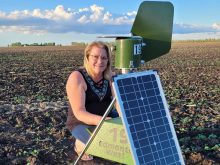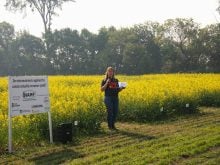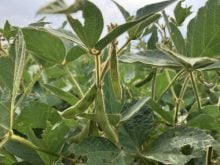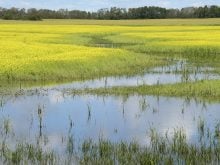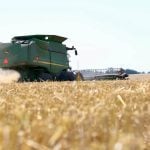Research continues into the viability of winter pulse crops in southern Alberta, but scientists are not ready to make recommendations.
The Southern Applied Research Association and Alberta Agriculture are conducting trials in plots near Lethbridge.
SARA is in its second project year, exploring winter and spring-seeded plots of peas and lentils at different seeding rates. It is also studying crop reaction to various seed treatments and the management of herbicides in pulse crops.
Alberta Agriculture is in its third year of pea, lentil and faba bean trials, also with different seeding times and rates. It also has plots near Brooks, Lacombe and Edmonton.
Read Also

GSI’s GrainVue allows for remote grain bin monitoring
GSI’s GrainVue bin monitoring system allows producers to monitor grain conditions inside the bin and automate any drying, cooling or aerating that is needed to keep grain in peak condition.
Government researchers planted peas in late September and early to mid-October last year, said agronomist Ross McKenzie. Germination was good on all plots, but winter soil temperatures affected survival.
Temperatures of -8 C and lower tend to kill winter peas, which he said happened in some plots.
One more year of trials are planned. More sites will be added in the southern half of the province this year.
“By next year, we should be able to develop basic recommendations on winter peas and lentils,” said McKenzie.
Winter faba bean results were generally poor because of low winter survival rates.
“I wouldn’t recommend anybody even trying winter faba beans at this point.”
Pea trials involved seeding rates of 75, 112 and 150 seeds per sq. metre, the latter being approximately double the normal seeding rate.
Plots seeded earliest, around Sept. 1, at the 112 and 150 seed rates have tended to yield best.
Winter peas outyielded spring peas last year on plots near Brooks, where excess moisture wasn’t a big problem.
McKenzie said winter peas are “something to keep an eye on” for producers. He sees more potential opportunities for winter peas than winter canola.
Winter lentil trials also involved different seeding dates and rates of 110, 165 and 220 plants per sq. metre. Seeding occurred later than desired last fall because of heavy moisture.
McKenzie said the 165 rate in the plots planted earliest tended to produce the best looking stands. However, rain has complicated analysis of the results.
“I think that there’s some good promise for winter lentils, but we are going to continue this work for at least one more year,” he said.
Winter seeded peas and lentils can be harvested in early to mid-July, depending on initial seeding dates, which can help spread the harvest workload for producers.




